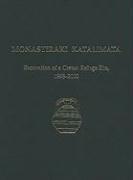Monastiraki Katalimata
BücherAngebote / Angebote:
The natural terraces hanging high on the northern cliff of the Cha Gorge at the site of Monastiraki Katalimata in eastern Crete were discovered as an excellent refuge site for the first time about 5, 500 years ago. At first sight, Katalimata looks like an extreme refuge place where one might expect small groups of people hiding for a brief time during the most serious period of threat. Excavation of the largest of the terraces, however, has shown that use of the place was often long-lasting and more complex. The most interesting result of the project was the identification at Katalimata of almost all the same phases known from elsewhere in Crete (and, in some cases, the broader Aegean region) as periods of disturbances, relocations, and destructions. The pottery, when compared with the material from Chalasmenos and neighbouring sites near Kavousi, allows the site to be placed in a well-established historical context in relation to the general breakdown of LM IIIB settlement pattern around 1200 B.C. This monograph provides a detailed discussion of the six occupational phases recorded on the largest of Monastiraki Katalimata's terraces (Final Neolithic, MM II, LM IB-IIIA1, LM IIIC, Early Byzantine, and Late Venetian to the 17th century A.D.) and offers a reconstruction of the site's role in the context of Cretan history.
Folgt in ca. 10 Arbeitstagen
